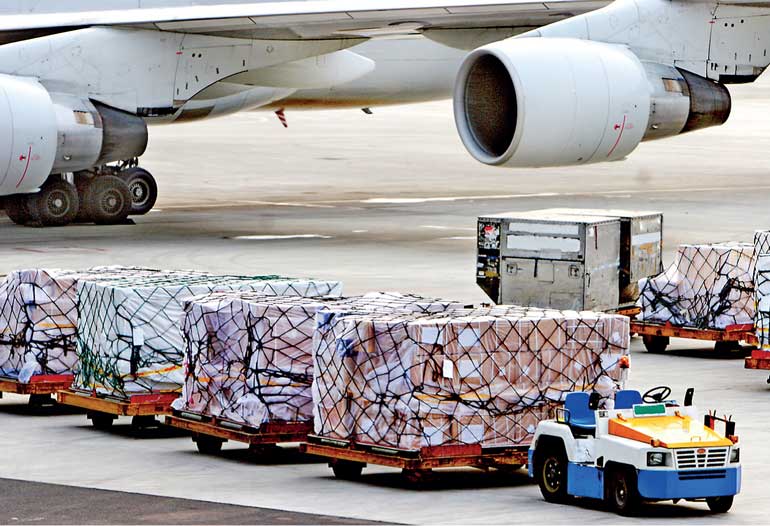Friday Mar 14, 2025
Friday Mar 14, 2025
Monday, 4 September 2017 00:00 - - {{hitsCtrl.values.hits}}
SINGAPORE (Reuters): A resurgence in air cargo demand is bolstering earnings at Asian airlines and is set to remain particularly robust all year, a boost for many carriers as fierce competition squeezes margins in their mainstay passenger operations.

The region’s airlines take on an outsized role in air freight, accounting for nearly 40% of the global market as Asia is a major manufacturing hub. For Cathay Pacific Airways Ltd and Korean Air Lines Co. - the world’s No. 4 and 5 air cargo firms - freight represents nearly a quarter of revenue.
Carriers are benefiting from sharp drawdowns in inventories of goods like semiconductors and auto parts on the back of a strengthening global economy. That has prompted manufacturers and their customers to turn from ocean shipping to the faster, albeit more expensive, option of air to meet demand.
Global air cargo volumes surged 10.4% in the first half – their strongest half-year performance in seven years and nearly triple the industry’s average growth rate of 3.9% in past five years, data from the International Air Transport Association shows.“(It’s) a good story,” said Cathay Pacific CFO Martin Murray in an earnings call last week. “What we’re seeing is, both into Hong Kong and ex Hong Kong, and both long haul and short haul performing well.”
The airline saw a 12% rise in first-half cargo revenue and said the outlook for the rest of the year was strong – an important bright spot for the firm after it logged its worst half-loss in at least 20 years.
Cathay also noted that yields for air cargo rose for the first time since 2011 and said that it had leased two dedicated 747-8 freighters in June.
Singapore Airlines Ltd, a top 10 cargo carrier with freight accounting for 13% of its revenue, was also optimistic about demand throughout 2017 as customers were already securing capacity for the year-end peak season in anticipation of major product launches, a spokesman said.
Its cargo division, which earns more revenue than its low-cost airline unit, swung to a S$6 million ($4.4 million) first-quarter profit from a loss of S$34 million in the same period a year earlier.
“Cargo, far from being a drag, is now back as a profit contributor, even for freighters,” Andrew Herdman, director general at the Association of Asia Pacific Airlines.
It’s a welcome filip for a sector grappling with extra capacity after many airlines added new routes and increased flights, sparking a price war as they scrambled for passengers.
The boom in restocking goods like auto parts and chips via air freight is expected to end sometime around the end of the year, said IATA Chief Economist Brian Pearce. But growth in e-commerce and a shift by pharmaceutical companies to air for safer cold transportation of drugs is expected to continue to support demand.
“I would think that we would see strong growth still in the second half of this year with a return to more normal (growth) levels perhaps next year,” he said. ($1 = 1.3624 Singapore dollars)
Discover Kapruka, the leading online shopping platform in Sri Lanka, where you can conveniently send Gifts and Flowers to your loved ones for any event including Valentine ’s Day. Explore a wide range of popular Shopping Categories on Kapruka, including Toys, Groceries, Electronics, Birthday Cakes, Fruits, Chocolates, Flower Bouquets, Clothing, Watches, Lingerie, Gift Sets and Jewellery. Also if you’re interested in selling with Kapruka, Partner Central by Kapruka is the best solution to start with. Moreover, through Kapruka Global Shop, you can also enjoy the convenience of purchasing products from renowned platforms like Amazon and eBay and have them delivered to Sri Lanka.
Discover Kapruka, the leading online shopping platform in Sri Lanka, where you can conveniently send Gifts and Flowers to your loved ones for any event including Valentine ’s Day. Explore a wide range of popular Shopping Categories on Kapruka, including Toys, Groceries, Electronics, Birthday Cakes, Fruits, Chocolates, Flower Bouquets, Clothing, Watches, Lingerie, Gift Sets and Jewellery. Also if you’re interested in selling with Kapruka, Partner Central by Kapruka is the best solution to start with. Moreover, through Kapruka Global Shop, you can also enjoy the convenience of purchasing products from renowned platforms like Amazon and eBay and have them delivered to Sri Lanka.